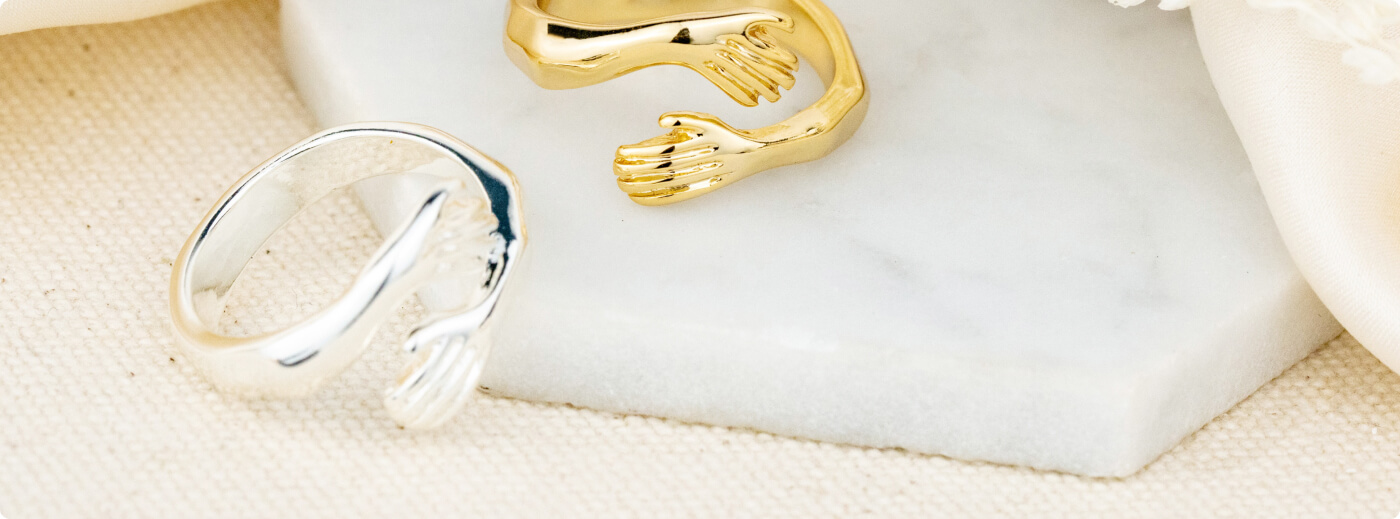Cultural Perspectives on White Gold: Symbolism and Traditions Worldwide

5min read

Introduction
When wearing white gold jewellery, our focus often lies on how it complements our outfits or expresses our personal style. Some pieces may even hold sentimental value, like a cherished ring handed down by a beloved grandmother. Beyond its decorative purpose, white gold jewellery possesses profound meaning and symbolism. The interpretation of white gold jewellery is diverse, influenced by the specific piece, materials employed, and even cultural backgrounds.
In this blog, we will explore the fascinating world of white gold as we delve into its cultural perspectives, symbolism, and intriguing stories behind its use in various societies. Discover how this precious metal has become entwined with tradition, celebration, and personal expression in different corners of the globe.
The Symbolism of White Gold in Ancient Civilizations
In ancient civilizations, white gold was often associated with the divine and the celestial. In Egypt, the pharaohs believed gold to be the flesh of the gods and a symbol of their immortality. It adorned their tombs and represented their power and authority. Similarly, in ancient Mesopotamia, gold was linked to the gods, symbolising their benevolence and protection over the people. The Greeks associated gold with the sun god Apollo, representing purity, enlightenment, and eternal life.
White Gold in Western Culture
In Western culture, white gold represents elegance and modernity. Created by combining gold with other white metals such as palladium, silver, or nickel, white gold gained popularity in the early 20th century as an alternative to yellow gold. The subtlety of its hue allows it to pair effortlessly with diamonds and gemstones, making it a preferred choice for engagement rings and other fine jewellery.
For many Western societies, white gold also symbolises purity and devotion. This association, combined with the sparkling brilliance of diamonds, makes it a common choice for engagement and wedding rings, symbolising eternal love and commitment.
White Gold in Asian Cultures
In contrast, Asian cultures imbue white gold with unique meanings and uses. In some parts of Asia, white gold is considered an auspicious metal, often used for special occasions like weddings and religious ceremonies. In Chinese culture, white gold is particularly cherished for its association with wealth and prosperity. The Chinese character for gold, “黄金” (huángjīn), also signifies abundance, making it a cherished metal in traditional customs.
In India, white gold holds cultural significance in various regions. In South India, it is often used to craft intricate temple jewellery worn by deities and temple dancers during religious ceremonies. In contrast, in North India, white gold is more commonly used for wedding jewellery and other festive occasions, signifying opulence and cultural heritage.
White Gold in African and Middle Eastern Traditions
African and Middle Eastern cultures have their distinct perspectives on white gold. In many parts of Africa, gold has been historically associated with spirituality and divine protection. White gold’s purity enhances this symbolism, and it is often used to create ornate jewellery for religious rituals and important events.
In the Middle East, gold, including white gold, has deep-rooted significance in cultural traditions. Bedouin women, for example, often wear white gold jewellery as a symbol of wealth and status, showcasing the family’s prosperity and heritage. Additionally, in Islamic culture, gold is frequently gifted on significant occasions as a token of appreciation and affection.
White Gold in Indigenous Cultures
Indigenous cultures also hold unique perspectives on white gold. In some Native American tribes, gold was revered for its connection to the sun, representing life, warmth, and prosperity. White gold, with its pure and radiant nature, was a fitting symbol for these attributes.
Similarly, in Australia, Aboriginal communities have used gold as a ceremonial metal for thousands of years. The brightness of white gold, akin to the shimmering sands and sunlit waters of the continent, aligns with their spiritual beliefs, often symbolising the sacred connection between land, ancestors, and life.
Final thoughts
White gold’s symbolism and traditions worldwide showcase the profound influence this precious metal has on diverse cultures and societies. From ancient civilizations, where it was considered divine and immortal, to modern times, where it represents wealth and luxury, gold continues to hold a significant place in human history.
The traditions associated with white gold also showcase the deep-rooted beliefs and customs that have been passed down through generations. From Indian weddings adorned with intricate white gold jewellery to the significance of white gold in ancient Egyptian rituals, it is evident that this precious metal holds immense cultural value. By exploring different cultural perspectives, we gain a deeper understanding and appreciation for the symbolism and traditions surrounding white gold globally.







